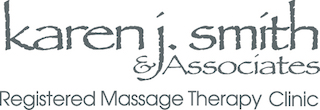RMTs’ extensive training allows them to meet a wide range of health care needs, from acute injury rehabilitation to prevention and maintenance of general overall health. Massage therapy is the integration of manual techniques, active exercise programs and patient education, working in conjunction with the medical doctors. RMTs are trained to assess the specific rehabilitative requirements of injured persons. This allows RMTs to correctly identify the appropriate treatment program for each person. While individual programs can vary, a program may include specialized aquanetics, core stabilization exercises and work hardening.
These programs are often progressive in nature, initially addressing the pain, discomfort and Inflammation associated with injuries. As treatment progresses, RMTs will often address the underlying cause and work to rehabilitate the patient. Once rehabilitation Is complete and the patient has been restored to optimal function, the RMT can offer preventive education and exercise programs.
Research shows that massage therapy is effective in reducing fibrosis and contracture, improving circulation, reducing muscle spasm, controlling pain, improving respiratory function and affecting the emotional centres in the limbic system.
